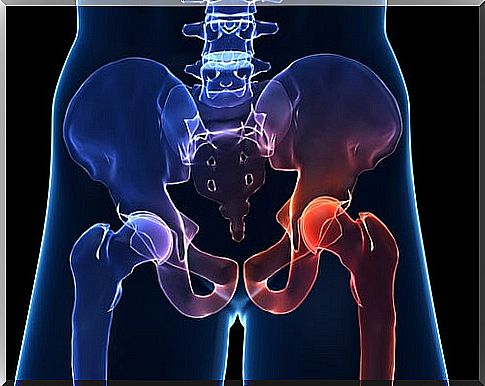What Is A Hip Replacement And How Is It Implanted?
When we damage our hips, we may need to replace it with a prosthesis. A hip replacement is a replacement of all the components that are part of the hip joint with others made of synthetic material.
The hip replacement must be implanted when the patient does not respond to conservative treatments, such as the administration of anti-inflammatory drugs, rest or rehabilitation.
We keep mentioning the hip replacement, but do we know what the hip is exactly and how it works? We will briefly look at these points to better understand the functions of the hip replacement.
What is the hip and how does it work?
The hip is a joint that anchors the head of the femur (the upper bone of the leg, the longest in the body) with the pelvis. The latter is a hemisphere-shaped cavity of the hip bone. This cavity is called the acetabulum. And that’s where the upper end of the femur, known in medicine as the femoral head, fits in.
This part of the femur moves within the acetabulum allowing us to walk and run. Both the femoral head and the acetabulum have a cartilaginous layer that covers them in order to facilitate the sliding of both parts without pain.
The entire hip is surrounded by ligaments and fibrous tissues that form the joint, allowing the following movements to be carried out:
- Extension and flexion
- Abduction
- Adduction
- External and internal rotation
Types of hip replacement
We can classify hip prostheses based on three aspects. On the one hand, we can make a classification according to the type of surgery to be performed. We can also classify them according to the size of their components, depending on the anchoring to the bone of their components and, finally, according to the number of prostheses replaced.
Type of surgery
Among the types of surgeries that are carried out to implant a hip replacement, we find two types.
- Primary: is the one that changes the joint or some of its original components for a prosthesis.
- Revision: it is the surgery in which what is replaced is a worn or old prosthesis with a new one.
Component size
Depending on the size of the components with which the hip replacement is going to be performed, we can find 3 different types:
- Replacement of conventional prosthesis : the size of the components is usually the usual.
- Replacement of short stem prostheses : they have the usual components except the stem, which serves as an anchor in the femur and is shorter than usual. The ultimate goal of reducing the length of this component is to reduce pressure damage so that the femur is better preserved.

- Surface hip replacement : in this case, the stem is very small and is performed in young people with great integrity of the femur bone.
Component anchoring
Depending on how the different ones are joined together and with other bone structures that serve as support, we can distinguish 3 types of prostheses.
- Cemented hip: which, as its name suggests, uses cement to adhere the components to the bone parts.
- Uncemented hip: its components are not attached with cement, but rather are hybrid prostheses in which the femoral head and its stem are attached to the interior of the bone with cement, but the acetabulum of the pelvis is not.
- Reverse hybrid hip: it is the same as the previous one but in reverse.
Number of prostheses replaced
The last classification is the one made according to the number of implanted prostheses. Here we distinguish 2 types:
- Total hip prosthesis: the entire hip is replaced, changing the two components of the joint.
- Partial hip prosthesis : in this intervention the component of the femoral head is replaced with the stem.
How is a hip replacement implanted?
Before a patient undergoes hip replacement surgery, a preoperative study should be performed. This consists of, at a minimum, a blood test, a chest X-ray, and an EKG.
It is during the preoperative period when the anesthesiologist may order more specific tests such as pulmonary ventilation or allergy tests, for example.
It Used General anesthesia or spinal anesthesia (back down). In replacement of prostheses, the general one is usually preferred, since it is normal for them to last several hours.
Once anesthesia has been administered and the surgical field prepared, an incision is made in the area to be operated on. The incision varies according to the surgeon’s preferences.

The hip joint is exposed and the bone necessary to implant the prosthesis is excised. The neck and head of the femur are usually cut off and the most superficial part of the pelvic acetabulum is pierced.
A deep hole must also be made in the part of the femur in order to make a hole to insert the stem of the prosthesis.
The surgeon must do a trial reduction, which consists of placing a temporary prosthesis in position that will allow him to know the size of the components that best adapt to the patient’s anatomy.
Once you have decided on the type of prosthesis to implant, you will begin to fix the final components according to the types that we have seen previously. When finished, he will close all planes of the surgical wound using sutures or staples.









